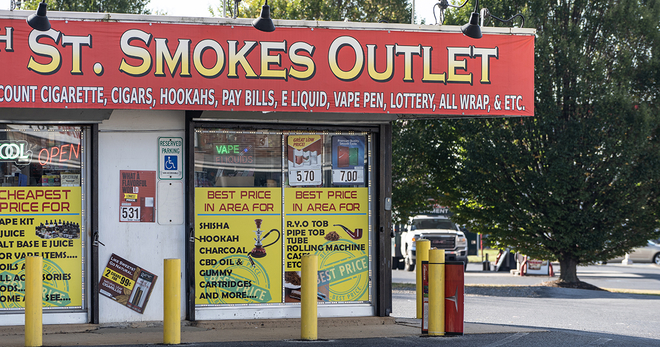Nearly 90% of Instagram posts by tobacco companies violate either federal regulations or guidance on youth marketing
The vast majority of Instagram posts by tobacco brand-owned accounts did not follow U.S. Food and Drug Administration (FDA) regulations regarding warning labels, and many included content likely to appeal to young people, according to a study published in Nicotine & Tobacco Research. Instagram imposes few restrictions on tobacco content, and its enforcement of these restrictions is minimal, according to the study authors.
A surge in unauthorized e-cigarette products in recent years has made enforcement of FDA restrictions on e-cigarette marketing a challenge, especially on social media. This study builds on previous Truth Initiative research showing that Instagram influencers frequently posted and promoted branded vaping content and failed to disclose brand relationships to viewers, highlighting a pattern of violation of federal disclosure requirements and platform policies. Although Instagram has rules against content that aims to sell a product or promote tobacco use, they are rarely enforced.
Instagram is used by more than 70% of teens and young adults in the United States. To protect young people on social media, better enforcement of existing regulations and new regulations addressing social media marketing are needed to curb exposure to this potentially harmful content
Few posts comply with warning labels, and many emphasize youth-appealing themes
Researchers examined a sample of 1,243 Instagram posts and videos from tobacco brand-owned accounts from January 2021 to February 2022, evaluating them based on compliance and themes. According to the study, most of the posts evaluated lacked the federally required health warnings, with only 12.8% containing a fully compliant warning that covered 20% of the post.
More than 400 posts in the sample were evaluated for themes and visual elements that could appeal to young people, including tech-forward aspects and stylized photography. The study found that nearly half (45%) of posts emphasized the high-tech aspect of the product, and 33.6% of the posts used stylized and appealing photography, raising concerns about the potential for youth uptake. The emphasis on advanced technology in e-cigarettes harkens back to JUUL, one of the most popular e-cigarette brands, whose tech-forward design made it an instant success among teens and young adults.
Themes of identity made shareable
According to the study, device customizability and themes related to “vaper identity” were also highlighted in branded posts and were present in 24.5% and 17.7% of the sample, respectively. Furthermore, 32.2% of the posts encouraged social media engagement through likes, comments, or shares, which helps to boost reach without spending advertising money. Finally, 5.7% of the posts included memes, a format designed to be shareable.
Increased enforcement of regulations on e-cigarette marketing on social media is needed
The findings of this study indicate that the regulatory framework restricting e-cigarette advertisement on social media is insufficient, and increased enforcement is needed. The top five e-cigarette companies reported doubling spending on social media advertising from 2018 to 2020, while reducing spending on other forms of advertising, showing that social media is a lucrative space for many brands.
Instagram, which allows people younger than 21 to sign up and access all posts, gives tobacco companies nearly unrestricted access to young people and has even become a platform where underage youth can obtain e-cigarettes through a practice known as discreet shipping.
To protect young people on social media, existing regulations must be enforced. Furthermore, additional regulation may be necessary to curb the use of themes and imagery that is known to attract young people.
More in tobacco industry marketing
Want support quitting? Join EX Program
By clicking JOIN, you agree to the Terms, Text Message Terms and Privacy Policy.
Msg&Data rates may apply; msgs are automated.



